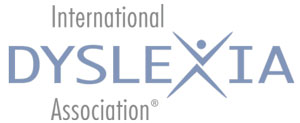Share This: 


Volume 7, Issue 2
April 2018
Hollis Scarborough—creator of the famous Reading Rope and senior scientist at Haskins Laboratories—is a leading researcher of early language development and its connection to later literacy.
Dr. Scarborough’s association with the International Dyslexia Association (IDA) goes back to 1994 when she served as associate editor of the Annals of Dyslexia until 2002. In 2009, she received IDA’s highest honor, the Samuel Torrey Orton Award. Dr. Scarborough continues her IDA affiliation as a member of both IDA’s Council of Advisors and IDA’s Scientific Advisory Board. Her contributions on a national level (e.g., the Research Council, Society for the Scientific Study of Reading, and the Committee on the Prevention of Reading Difficulties in Young Children) have positively influenced the reading instruction in the United States.
The genesis of the Reading Rope dates back to Scarborough’s lectures for parents on the complexities involved in learning to read. Originally, she spoke of skilled reading as resembling the “strands” of a rope, using pipe cleaners to illustrate the interconnectedness and interdependence of all the components.
The Reading Rope consists of lower and upper strands. The word-recognition strands (phonological awareness, decoding, and sight recognition of familiar words) work together as the reader becomes accurate, fluent, and increasingly automatic with repetition and practice. Concurrently, the language-comprehension strands (background knowledge, vocabulary, language structures, verbal reasoning, and literacy knowledge) reinforce one another and then weave together with the word-recognition strands to produce a skilled reader. This does not happen overnight; it requires instruction and practice over time.
For many children, learning to read is a challenging undertaking. The Reading Rope, created by Dr. Hollis Scarborough, captures the essence of this task.
Copyright © 2018 International Dyslexia Association (IDA). Opinions expressed in The Examiner and/or via links do not necessarily reflect those of IDA.
We encourage sharing of Examiner articles. If portions are cited, please make appropriate reference. Articles may not be printed for the purpose of resale. Permissionto republish this artilce is available from info@dyslexiaida.org.

